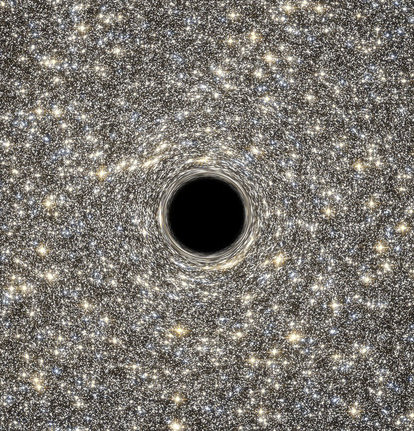Hubble discovers supermassive black hole
Astronomers have found an unlikely object in an improbable place: a monster black hole lurking inside one of the tiniest galaxies ever known. The black hole is five times the mass of the one at the center of our Milky Way galaxy. If you lived inside this dwarf galaxy, the night sky would dazzle with at least 1 million stars visible to the naked eye. “We do not know of any other way you could make a black hole so big in an object this small,” said astronomer Anil Seth from the University of Utah.
It is inside one of the densest galaxies known to date — the M60-UCD1 dwarf galaxy that crams 140 million stars within a diameter of about 300 light-years, which is only 1/500th of our galaxy’s diameter.
A team of astronomers studying the black hole
The finding implies that there are many other compact galaxies in the universe that contain supermassive black holes. Seth’s team of astronomers used the Hubble Space Telescope and the Gemini North 8-meter optical and infrared telescope on Hawaii’s Mauna Kea to observe M60-UCD1 and measure the black hole’s mass. The black hole at the center of our Milky Way galaxy has the mass of four million suns. As heavy as that is, it is less than 0.01 percent of the Milky Way’s total mass. By comparison, the supermassive black hole at the center of M60-UCD1, which has the mass of 21 million suns, is a stunning 15 percent of the small galaxy’s total mass.

Science hubble